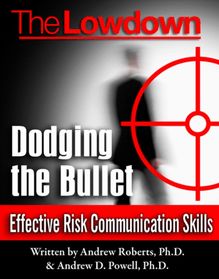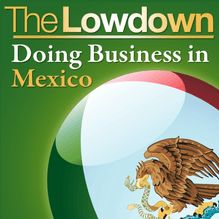-
 Univers
Univers
-
 Ebooks
Ebooks
-
 Livres audio
Livres audio
-
 Presse
Presse
-
 Podcasts
Podcasts
-
 BD
BD
-
 Documents
Documents
-
- Cours
- Révisions
- Ressources pédagogiques
- Sciences de l’éducation
- Manuels scolaires
- Langues
- Travaux de classe
- Annales de BEP
- Etudes supérieures
- Maternelle et primaire
- Fiches de lecture
- Orientation scolaire
- Méthodologie
- Corrigés de devoir
- Annales d’examens et concours
- Annales du bac
- Annales du brevet
- Rapports de stage
La lecture à portée de main
Vous pourrez modifier la taille du texte de cet ouvrage
Découvre YouScribe en t'inscrivant gratuitement
Je m'inscrisLowdown: Dodging the Bullet - Effective Risk Communication Skills , livre ebook
Découvre YouScribe en t'inscrivant gratuitement
Je m'inscrisEn savoir plus
Vous pourrez modifier la taille du texte de cet ouvrage
En savoir plus

Description
Sujets
Informations
| Publié par | Creative Content |
| Date de parution | 17 décembre 2010 |
| Nombre de lectures | 1 |
| EAN13 | 9781906790493 |
| Langue | English |
Informations légales : prix de location à la page 0,0200€. Cette information est donnée uniquement à titre indicatif conformément à la législation en vigueur.
Extrait
The Lowdown: Dodging the Bullet
Effective Risk Communication Skills
by Andrew Roberts, Ph.D. and Andrew D. Powell, Ph.D.
THE LOWDOWN: DODGING THE BULLET – EFFECTIVE RISK COMMUNICATION SKILLS
First published in 2010 By Creative Content Ltd, Roxburghe House, Roxburghe House, 273-287 Regent Street, London, W1B 2HA. Copyright © 2010 Creative Content Ltd
The moral right of Andrew Roberts Ph.D. and Andrew D. Powell, Ph.D. to be identified as the authors of this work has been asserted by them in accordance with the Copyright, Designs and Patents Act, 1988.
All rights reserved. No part of this publication may be reproduced or transmitted in any form by any means, electronic or mechanical, including photocopying, recording or any information storage and retrieval system, without prior permission in writing from the publisher nor be otherwise circulated in any form or binding or cover other than that in which it is published.
In view of the possibility of human error by the authors, editors or publishers of the material contained herein, neither Creative Content Ltd. nor any other party involved in the preparation of this material warrants that the information contained herein is in every respect accurate or complete and they are not responsible for any errors or omissions, or for the results obtained from the use of such material.
The views expressed in this publication are those of the authors and do not necessarily reflect the opinion or policy of Creative Content Ltd. or any employing organization unless specifically stated
Typesetting by CPI Rowe Cover Design by Daniel at HCT Design
ISBN 978-1-906790-49-3
www.creativecontentdigital.com
TABLE OF CONTENTS
INTRODUCTION
Chapter 1: What is Risk Communication?
Chapter 2: Risk Perception Theory
Chapter 3: Trust Determination Theory
Chapter 4: Mental Noise and Negative Dominance Theories: When the mind gets in the way!
Chapter 5: Risk Communications in Business
Chapter 6: Risk Communications & Personal Confrontations: Dodging the Bullet from family, friends, and colleagues.
References
Appendix 1: Message Map Example
Introduction
Anyone watching news coverage live on the morning of September 11, 2001 will forever remember the thunderous impact of one of the worst terrorist attacks the world has ever seen.
That day changed the course of millions of lives. Ordinary men and women set out for work, never to return home. In the days and weeks following the tragedy, one can only imagine the level of anxiety that people faced just going about their daily lives. But that is what most people in New York were required to do: draw a veil over the incident and carry on, go back to work, get back to ‘normal’ and the man who was called upon to help them do that was New York’s Mayor, Rudolph Giuliani.
Giuliani may not have been known to many outside of the US before 9/11, but on that day he was thrust into the spotlight in what many see as his defining moment. Giuliani emerged as a great leader, a man who showed remarkable composure in the face of a tragedy that was unprecedented in terms of its impact, not just on New Yorkers, but on all Americans and on the rest of the world.
Giuliani’s response to the tragedy was immediate. His first communications, as relayed in his autobiography, Leadership , were arguably the most critical and difficult, but were delivered flawlessly. He was ‘sleeves rolled up’ and hands on at the beginning of the crisis, immediately travelling to his emergency command centre, right next to ground zero. He wanted to see what was happening for himself, despite the danger.
Giuliani, speaking to TV channel New York 1 by telephone, urged people to remain calm and to evacuate lower Manhattan. He assured them that he had spoken to state governor George Betaki and the White House, and that the city was being protected by US military.
Then he said: "My heart goes out to all of you. I've never seen anything like this, I was there shortly after it happened and saw people jumping out the World Trade Center. It’s a horrible, horrible situation and all I can tell you is that every resource that we have is attempting to rescue as many people as possible. The end result is going to be some horrendous number of lost lives, I don't think we know yet, but right now we have to focus on saving as many people as possible."
He spoke eloquently and sincerely, showing a level of caring for all those connected to the tragedy, in a way that was unexpected not unexpected in its compassion, of course, but rather in the depth and fluency of its extemporaneous delivery under the toughest of circumstances. He sought to reassure, while informing of the need to evacuate. He told a worried public about the city’s commitment to saving lives, via the courageous emergency services, and to rebuilding New York.
Since 9/11, Giuliani has been asked about how he remained calm in the face of a crisis of such magnitude. His response was simple: "Preparation."
Throughout his term as Mayor, Giuliani and his team conducted simulation exercises in-depth planning of what individuals and agencies would do if the city faced a chemical or biological attack, or terrorist attack at a political gathering.
But it wasn’t all about contingency plans and emergency preparedness centres. It also involved specific preparation on how to communicate to a distressed public and a media likely to be clamouring for information.
Anticipation, relentless preparation, compassion, conviction and optimism were all displayed. Short messages, to the point, in plain and simple English all characteristics of a field of communications science especially designed to work in traumatic situations. Mayor Giuliani used Risk Communication strategies that he had learned during his time in office and it was this preparation that enabled him to perform so creditably during the 9/11 disaster.
Risk Communications is the science of communicating in high-stress, high-concern, controversial or low-trust situations and, like Giuliani, many successful exponents of this science have emerged from crises with enhanced reputations.
Risk Communications is a skill that can enable you to communicate like a great leader during difficult situations and to make sure that what you say is remembered in situations of great stress.
Risk communication strategies can be applied across a broad range of situations. We hope that you never have to face anything as daunting as 9/11 but you will most probably face situations of high concern throughout your daily life. It may be on a personal level at home with a loved one, at work with a colleague, or facing a company challenge, such as a product recall, or a restructuring.
In this book we will summarise some of the science behind risk communications, chronicle the four main theories of risk communications and give you practical advice that will help to implement what you have learned both in written and spoken form either at home or at work. These messages will be factual, believable, clear, concise, and positive.
Let’s begin.
Chapter 1: What is Risk Communication?
The core rationale underpinning risk communication is that in situations of high stress or concern the normal rules of communication change. Retention of facts is limited; attention span shrinks and different thought processes take over. We encounter a mental state where interference, or ‘static,’ severely limits the ability to listen.
Think of a 7-digit phone number normally, no problem. Try the same in an emergency situation, and you’ll be lucky to remember 911 or 999. This medical fact underpins the central theme of this book: In situations of high stress, high concern, high stakes and controversy THE GROUND RULES OF COMMUNICATION ARE DIFFERENT!!
Therefore, in order to communicate with any degree of success in controversial or traumatic circumstances a situation when reputations and relationships can be made or broken a different approach is required. You need Risk Communication skills!
In a nutshell Risk communication is a science-based approach for communicating effectively in situations that are:
High concern
Low trust
Sensitive
Controversial
We are not simply talking about crisis communication here and you will have noticed that we have not included the word ‘crisis’ in the definition of Risk Communication. Crises are an extreme example of a high concern situation and, while we would certainly use risk communication techniques in these situations, the objectives of crisis communication are different.
The primary objectives of Crisis Communication are: Action AND Damage control.
Typically, this will involve
A limited number of speakers
Highly specific and controlled messages
One-way communication
Risk Communication, on the other hand, can be used in everyday situations where one party has a high level of concern about a particular issue. These are not crises, but simply situations where there is a perception of risk that has led to an increased level of concern.
Risk Communication will often involve:
More than one speaker
Many messages
And, most importantly, two-way communication
The objectives of Risk Communication are to:
Impart knowledge
Enhance the level of trust
Promote dialogue
Resolve conflicts
Influence attitudes, decisions and behaviour.
Risk communication is a proactive process. It is all about anticipation and being ready. Being ill-prepared can lead to the wrong words at the wrong time, said in the wrong way, and can cause serious harm. This may lead to:
Erosion of people’s confidence in you
The loss of your position of trust
Highly charged situations
Damage to your reputation or that of your organization not just LOCALLY but GLOBALLY
Clearly, some of these consequences of missteps in communication can be very personal. But what if you were a spokesperson for a public sector agency? The consequences could be erosion of public confidence in government agencies or, at the ext
-
 Univers
Univers
-
 Ebooks
Ebooks
-
 Livres audio
Livres audio
-
 Presse
Presse
-
 Podcasts
Podcasts
-
 BD
BD
-
 Documents
Documents
-
Jeunesse
-
Littérature
-
Ressources professionnelles
-
Santé et bien-être
-
Savoirs
-
Education
-
Loisirs et hobbies
-
Art, musique et cinéma
-
Actualité et débat de société
-
Jeunesse
-
Littérature
-
Ressources professionnelles
-
Santé et bien-être
-
Savoirs
-
Education
-
Loisirs et hobbies
-
Art, musique et cinéma
-
Actualité et débat de société
-
Actualités
-
Lifestyle
-
Presse jeunesse
-
Presse professionnelle
-
Pratique
-
Presse sportive
-
Presse internationale
-
Culture & Médias
-
Action et Aventures
-
Science-fiction et Fantasy
-
Société
-
Jeunesse
-
Littérature
-
Ressources professionnelles
-
Santé et bien-être
-
Savoirs
-
Education
-
Loisirs et hobbies
-
Art, musique et cinéma
-
Actualité et débat de société
- Cours
- Révisions
- Ressources pédagogiques
- Sciences de l’éducation
- Manuels scolaires
- Langues
- Travaux de classe
- Annales de BEP
- Etudes supérieures
- Maternelle et primaire
- Fiches de lecture
- Orientation scolaire
- Méthodologie
- Corrigés de devoir
- Annales d’examens et concours
- Annales du bac
- Annales du brevet
- Rapports de stage

















